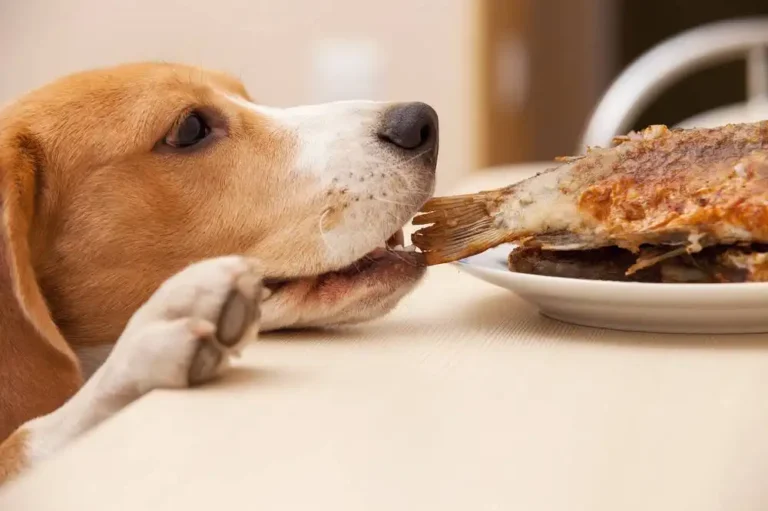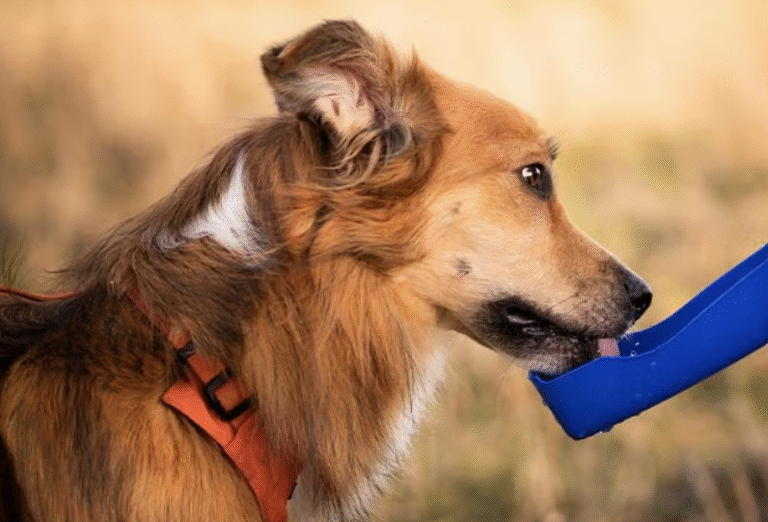Can dogs eat salt

Many owners can be heard arguing about whether salt is necessary in a dog’s diet. There are two points of view on this matter: some believe that it is harmful to the animal’s health, while others claim that salt is necessary in small amounts and even helps the pet’s development. In this article, we will figure out where the truth lies.
Salt in a dog’s diet: benefits and harms
In fact, salt is a vital component of both our and dogs’ diets. It is a source of such microelements as sodium and chlorine. In nature, salt is found in seawater and in the form of rock layers in rocks. Herbivores often come to such places – salt licks – because they hardly get this component from other sources. Predators, including canines, get the necessary amount of this mineral from the blood and liver of their prey.
If you pay attention to the composition of ready-made dog food, you will see salt or individual microelements in food additives in many of them. It not only has useful properties, but is also a flavor enhancer and a natural preservative. However, what is medicine in a drop is poison in a spoon, so it is important for dog owners to clearly understand how much salt their pet needs.
Salt contains microelements that maintain normal water and acid-base balance in the dog’s body. In addition, sodium ensures the proper functioning of cells and is involved in the generation and transport of nerve impulses, secretion of gastric juice, and chlorine maintains the necessary concentration of fluid in the intercellular space and removes toxins. When a dog lacks these microelements, the following symptoms may appear:
- lethargy;
- increased fatigue;
- neuromuscular disorders;
- delayed growth and development, abnormal skeletal formation in puppies.
However, the fact that salt has these beneficial properties does not mean that your pet can be given salty food in unlimited quantities. Excess salt has a negative effect on the dog’s body and can even cause poisoning (hypernatremia, i.e. an increased content of this microelement in the blood). In addition, salt is harmful to animals with diseases for which a salt-free diet is prescribed.

Should you salt your dog’s food?
Physiologically, dogs need salt to a lesser extent than humans, several times. This means that it is difficult to determine the required daily amount for an animal, since this value is extremely small. If in ready-made feeds, in the production of which a scientific approach is used, the content of vitamins, minerals and food additives is selected in accordance with the needs of dogs, then owners who feed their pets homemade food have doubts: is it necessary to add salt to food? To answer this question, it is necessary to pay attention to the products that the dog eats and in what form they are served to it.
Some foods contain natural salt. These include:
- meat;
- fish and seafood;
- some vegetables.
Yes, when boiled they lose a significant part of it, but this does not mean that the food should be salted. In this case, in order to provide the dog with the required amount of microelements, it is recommended to give the pet special vitamin and mineral complexes, which can only be recommended by a veterinarian. Only a specialist can assess the health of the animal, determine the need and amount of supplements.
When should dogs not be given salt?
Sometimes dogs need to limit their salt intake to the point of eliminating it entirely. In some cases, a veterinarian may prescribe a salt-free diet for the animal. This usually happens if the dog has the following disorders:
- chronic cardiovascular diseases;
- diseases of bones and joints;
- disorders of the digestive system;
- diseases of the kidneys and abdominal organs.
In such cases, special food from preventive or therapeutic lines that do not contain salt is selected for dogs. And for home-cooked rations, only bland dishes can be prescribed. In addition, although many are used to sharing food with their pets, remember: you cannot treat animals with products from your table, especially salty ones.

Why is too much salt in food dangerous?
Salt in increased quantities does not bring any health benefits to the dog. Moreover, its excess is extremely dangerous for the animal, as it causes increased thirst, intestinal irritation and metabolic disorders. Also, in excessive quantities, salt can aggravate diseases of the urinary, musculoskeletal, cardiovascular systems.
Increased sodium and chlorine content in the diet leads to serious disruptions in the cardiovascular system. This is due to the fact that salt, regularly consumed with food, causes fluid retention, which causes increased blood pressure.
Consuming salt in its pure form can lead to poisoning.
In addition, excessive consumption of salty foods can cause kidney disease, osteoporosis, and water imbalance, which causes the blood to thicken and the cardiovascular system to work to the point of exhaustion. Therefore, you should not give your pet salty treats as a treat, even if your dog strongly “insists” on it.
You can determine an excess of salt in the body and salt poisoning by the following symptoms:
- increased thirst;
- frequent urination;
- swelling;
- diarrhea;
- nausea and vomiting;
- convulsions and paralysis (in cases of severe, life-threatening poisoning).
If you have the above symptoms, you should immediately contact a veterinarian who will be able to assess the dog’s condition, take blood for a biochemical analysis and electrolytes to determine the amount of trace elements, determine the cause of the illness and, if necessary, prescribe appropriate treatment.
It is because of the possible consequences of excess of this mineral that dog owners are advised to give preference to balanced ready-made food. Large manufacturers of pet food use a scientific approach when developing the composition, carefully control all stages of production in order to make the most useful and balanced food.
What kind of salt can you give to a dog?
- When we go to the grocery store, we can see many types of salt on the shelves:
- cooking;
- iodized;
- stone;
- “delicious”;
- “extra”;
- Himalayan;
- pink;
- marine and others.
Your eyes will run wild: which of them is more useful and can be used as a food supplement for your dog’s diet?
The grade of salt depends on its purity and grinding. It may contain carbonates, fluorides, sodium sulfate and other impurities. The sodium chloride content in store-bought salt can be 97-99%.
It is highly recommended that animals with thyroid disease not add iodized salt to their food, and it is best to avoid the highly purified “extra” variety altogether, as it contains the least amount of useful substances.
Veterinarians often recommend sea salt as a food supplement for a pet’s diet, since it contains a large number of essential microelements necessary for maintaining the body’s health: magnesium, zinc, iron, selenium, phosphorus, iodine, potassium. Therefore, sea salt in the quantities permitted and recommended by a veterinarian will be useful for a dog.
Salt should be present in the diet, as it provides the animal with the necessary nutrients and helps its harmonious development during the period of active growth. However, it is extremely important to ensure that the dog’s food is balanced. To do this, it is enough to approach the issues of feeding the pet correctly and not allow the consumption of salty products from our table.







One Comment